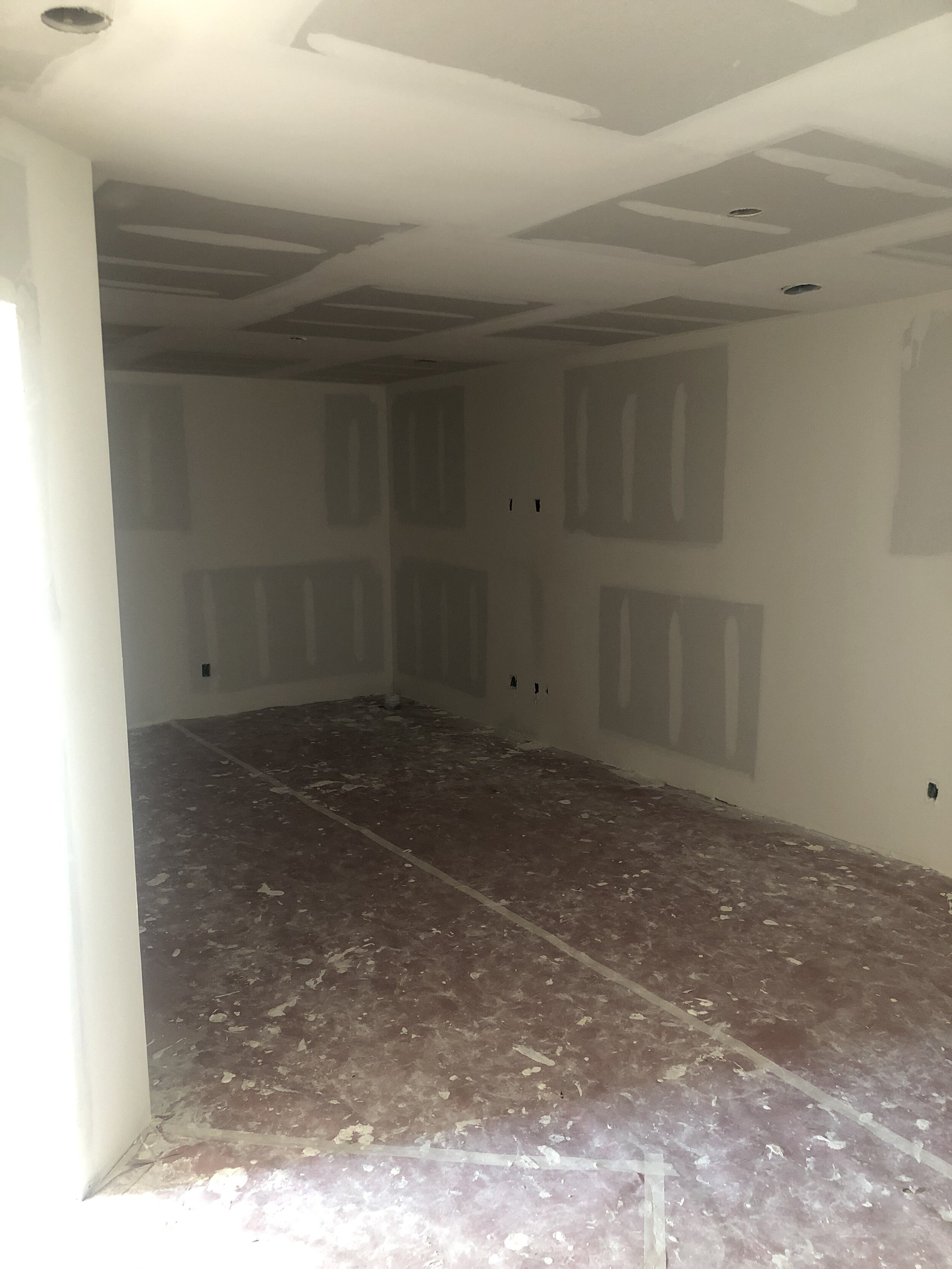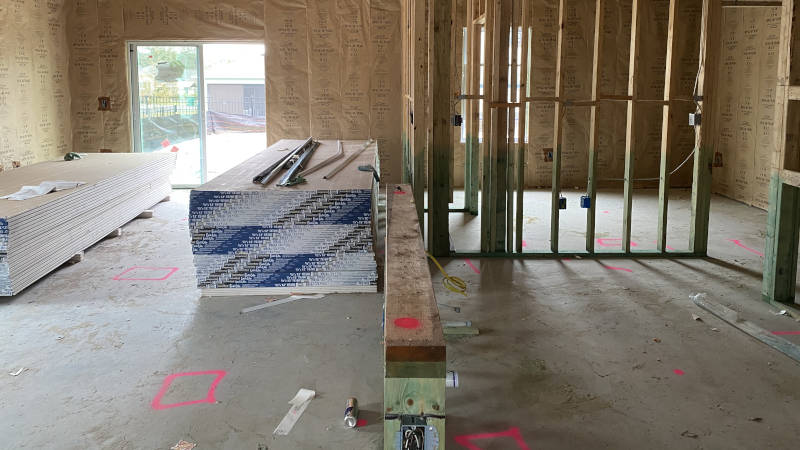Choosing the Right Drywall Contractors for Your Job
Choosing the Right Drywall Contractors for Your Job
Blog Article
The Ultimate Step-by-Step Overview to Drywall Installment: From Prep to Painting
Drywall installment is an important action in any type of construction or improvement task, and it calls for cautious attention to detail and specific execution. In this thorough guide, we will certainly walk you via each action of the procedure, from the initial preparation to the final paint. From collecting the required tools and materials to gauging and reducing the drywall panels, we will certainly give you with succinct and clear guidelines to guarantee an effective setup. Yet that's not all-- we will additionally cover the important actions of protecting the panels, finishing the surfaces, and achieving a remarkable paint job. Whether you're a skilled Do it yourself lover or a newbie home owner, this overview is your best resource for accomplishing professional results.
Gather Necessary Tools and Materials
To start the drywall installation process, it is necessary to collect all the necessary devices and products in a professional manner. Having the right tools and materials not only makes sure a smooth and effective installment yet additionally adds to the general quality and durability of the completed job.
Most importantly, you will certainly require a tape measure to accurately determine the dimensions of the ceilings and wall surfaces. This will enable you to reduce the drywall sheets to the appropriate dimension, minimizing waste. An utility knife with sharp blades is critical for specific and tidy cuts (drywall contractors). Furthermore, a T-square can help you accomplish straight and square cuts.
Next, you will require a cordless drill or screw gun to protect the drywall sheets to the studs. See to it to have an enough number of drywall screws on hand. These screws ought to be long enough to pass through the drywall and firmly secure it to the studs.
Other necessary devices include a drywall lift or a pair of aiding hands to help with positioning and holding the drywall sheets in position. A drywall T-square can be helpful for marking reducing lines, while a rasp or sanding block will certainly permit you to smooth any kind of rough edges.
Last but not least, gather all the required security devices, such as safety and security glasses, gloves, and a dust mask, to safeguard yourself throughout the installment procedure.
Prepare the Workplace
Prior to beginning the drywall installment process, it is critical to appropriately prepare the work location to ensure a efficient and smooth installation. This action is essential as it sets the foundation for the whole job, allowing the setup to continue effortlessly.
To begin, it is essential to clear the workplace of any type of furnishings, decorations, or other products that may obstruct the installment procedure. This consists of removing wall surface danglings, covering furniture, and securing the floors with drop fabrics or plastic sheets. In addition, make sure that the area is well-ventilated by opening home windows or utilizing followers to stop the buildup of dust and fumes.
Following, examine the wall surfaces and ceilings for any existing damage or irregularities. Resolve any issues such as fractures, openings, or unequal surface areas before waging the installation. This might include patching up openings, sanding down harsh areas, or using a skim coat to also out the surface area.
Finally, procedure and mark the format of the drywall sheets on the wall reference surfaces and ceilings. This will work as an overview throughout the setup procedure and aid make sure accurate placement of the panels (drywall installation). Take right into factor to consider any electrical outlets, switches, or other components that might need special interest
Measure and Cut the Drywall Panels
Precise dimensions and precise cuts are vital when dealing with drywall panels throughout the installment process. Prior to reducing the drywall, it is vital to gauge the measurements of the area where the panels will be installed. Use a measuring tape to identify the elevation and size of each section, and see to it to represent any electrical outlets or fixtures that may need personalized cuts.
As soon as the dimensions are taken, move them onto the drywall panels using a pencil or marking tool. Verify the measurements to ensure accuracy prior to proceeding with the cutting procedure. It is suggested to make use of a T-square or straight side to produce straight lines for reducing.

Keep in mind to wear security goggles and dirt masks when cutting drywall to protect yourself from particles (drywall repair). In addition, it is a good idea to have somebody aid you in holding the panels throughout the cutting procedure to make sure security and accuracy
Install and Secure the Drywall Panels
Correct installation and safe and secure accessory of the drywall panels is important for a effective and resilient finish. To start, very carefully lift the drywall panel right into area, ensuring it aligns with the marked standards on the wall surface. Utilize a drywall lift or employ the assistance of one more person to hold the panel ready while you protect it. Beginning with one corner, insert drywall screws into the panel, driving them via the drywall and into the wall studs. Be certain to room the screws uniformly, roughly every 16 inches along the edges and every 12 inches in the facility. It is very important to avoid over-tightening the screws, as this can cause the drywall to break or split. Repeat this process for each and every panel, ensuring they fit securely together with no gaps. As soon as all the panels are set up, examine the surface area for any kind of protruding screws more or imperfections. Drill or utilize a screwdriver to sink any type of protruding screws somewhat below the surface. Lastly, apply drywall joint compound to cover the seams between the panels and let it completely dry completely prior to proceeding to the next action.

Finish and Repaint the Drywall Surfaces
To accomplish a refined and specialist surface, the following step after installing and securing the drywall panels is to thoroughly try this complete and repaint the drywall surfaces. Any kind of noticeable joints or joints between the drywall panels have to be covered with joint compound and tape. Prior to painting, it is crucial to prime the drywall surface areas to make sure proper attachment and a smooth coating.
Final Thought

From gathering the necessary devices and materials to determining and cutting the drywall panels, we will certainly supply you with concise and clear guidelines to ensure an effective installment.Precise dimensions and exact cuts are essential when functioning with drywall panels during the installment process.Proper installment and safe and secure add-on of the drywall panels is essential for a resilient and effective coating. Starting from one corner, insert drywall screws right into the panel, driving them with the drywall and right into the wall surface studs.To achieve a refined and professional finish, the following action after installing and protecting the drywall panels is to meticulously end up and paint the drywall surfaces.
Report this page